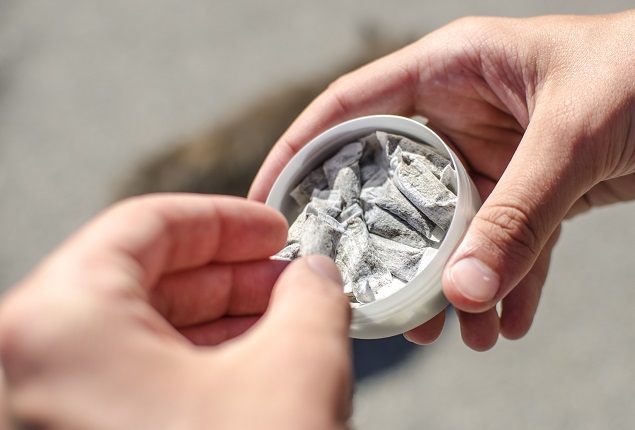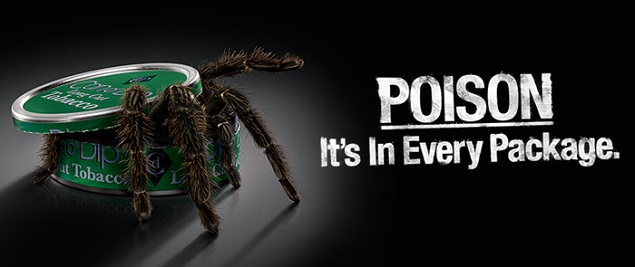
In the past several years, the war on smoking has been intensifying ever so slightly. Numerous health organizations are joining in; holding rallies, quit campaigns, producing anti-smoking commercials, and so on. We still have a long way to go, but, at least, we seem to be on the right path.
However, while the use of combustible cigarettes seems to be going down, a much more sinister practice is on the rise. Chewing tobacco has been making a comeback in recent years, in part thanks to it being promoted as a safer alternative to smoking. I’ve even seen it (and other smokeless tobacco products, such as snuff) compared to electronic cigarettes, just because they don’t produce smoke.
This is an extremely dangerous practice since most medical experts agree that chewing tobacco is at least as addictive as smoking. It contains at least 28 known carcinogens and causes short and long-term health problems. On the other hand, recent vape-related studies are mostly cautiously positive, with researchers finding it difficult to link vaping to major health conditions.
History of Chewing Tobacco
Chewing tobacco has a long and interesting history that dates back to the Native peoples of the Americas. They would chew the bitter leaves of the tobacco plant, often unprocessed and unrefined, to extract nicotine. Whether it was feeding an addiction or a religious practice, it’s difficult to say. Native Americans did use smoking in religious ceremonies, but we can’t really link chewing tobacco with that.
Chewing tobacco spread worldwide with the arrival of the first colonists. They refined the process because they didn’t like the taste of raw tobacco leaves. Their tobacco was smoke-dried and spices and sugar were added to it to make it more palatable. The recipe has remained pretty much the same since then, with different manufacturers adding their own proprietary twists.
Quickly after that, the chewing practice spread across the world. Soldiers, sports players (baseball players in particular), dignitaries – well, we can say that they are partly to blame for popularizing it. Today, it’s known by many names, such as chaw, daps, dip, chew, and others.
In recent years, we’ve been seeing a rise in the use of snuff tobacco as well. While not chewing tobacco, it falls under the broad umbrella of smokeless tobacco. Snuff is basically finely ground tobacco leaf that the users inhale, or ‘snuff’, through their nose.
Chewing Tobacco Facts
I’ve already mentioned that chewing tobacco is considered less harmful than smoking. While there is some truth in that (it has not been linked to lung cancer, which seems to be caused by combustible cigarettes and cigars, at least when examined in the context of tobacco consumption), saying that it’s less harmful than cigarettes is ridiculous. It’s like comparing getting hit by a car going 50 mph or a bus going equally fast. In both cases, you’re likely to end up dead because of it.
Let’s take a look at a couple of chewing tobacco-related facts:
- Smokeless tobacco is used by more than 300 million people in over 70 countries Most of the use falls off to chewing tobacco and it’s used most heavily in Southeast Asia (with India and Bangladesh leading the pack by accounting for 89% of users).
- More than 3 in every 100 adults in the US use smokeless tobacco (chewing tobacco or snuff). Men are more likely to use it (6.7 %) than women (0.6 %), and there are around 6 % of youth using it (under the age of 18).
- More than 250,000 people worldwide die from illnesses connected to smokeless tobacco. Primary causes are heart disease and cancers of the mouth, pharynx, and the esophagus.
- Chewing tobacco users are exposed to more nicotine than smokers. Depending on the brand, some chewing tobacco products can contain up to 4.5 mg of nicotine (as opposed to 1 or 2 mg typically found in cigarettes).
- A study also confirmed that people who use smokeless tobacco exclusively have 5X higher biomarker for the cancer-causing nitrosamine.
The picture doesn’t look all that pretty now, does it? Despite the regular claims (mostly by smokeless tobacco manufactures) that chewing tobacco is safer than smoking, your best bet would be to ditch the habit completely, with or without the use of (far safer) electronic cigarettes.
Does Chewing Tobacco Cause High Blood Pressure?
The reason why I wanted to take a closer separate look at whether or not chewing tobacco causes high blood pressure is simple – high blood pressure (hypertension) is a very silent and sneaky killer.
Hypertension causes numerous health problems, with some being:
- Increased risk of stroke and mini-stroke
- Increased risk of heart attack
- Damage to the arteries
- Increased chances for an aneurysm
- Enlarged left heart (potentially fatal condition)
- Can cause kidney scarring and kidney failure
- Has been linked to early onset dementia
Are you putting yourself at risk if you use chewing tobacco?
The answer is somewhat complicated. Some experimental trials have found that chewing tobacco (and other forms of smokeless tobacco) will cause an acute (momentary) elevation of systolic blood pressure, diastolic blood pressure, and pulse.
These studies are backed by a recent one done by a Mayo Clinic cardiologist, Dr.Virend Somers. This particular study followed 16 young men and measured their responses 30 minutes after using snuff. The results showed an increased heart rate (15 beats per minute or 25 %), a rise in systolic blood pressure (12 mmHg or 10 %), and an increase in bloodstream adrenaline (more than 50%).
Up until recently, these effects were attributed to nicotine, which is logical considering that it’s a vasoconstrictor. However, new (albeit controversial) studies are producing some curious results, namely that pure nicotine actually lowers blood pressure. Further studies will be needed to determine the truth – is nicotine responsible for high blood pressure or are other chemicals and compounds in chewing tobacco and cigarettes to be blamed?
Even though it seems that chewing tobacco doesn’t cause chronic hypertension, it’s been linked to an increase in heart disease for people who already suffer from it. Additionally, acute bouts of high blood pressure might be enough to damage your arteries and blood vessels supplying your brain and heart with oxygen and nutrients.
The real question then becomes: is chewing tobacco really worth the risk?
Short-Term and Long-Term Effects of Chewing Tobacco
As if high blood pressure wasn’t the cause sufficient alarm, chewing tobacco has more short-term health effects that you need to take into consideration. These include:
- Irritation and inflammation of gum tissue
- Mouth sores caused by repetitive chewing
- Increased tenderness of lips, gums, and oral tissue
- Halitosis (bad breath)
- Increased heart rate
- Reduced physical performance
Long-term effects are also present:
- Tooth decay attributed to added sweeteners
- Increased tooth sensitivity to cold and hot
- Increased chances for several types of oral cancer: pharynx, larynx, and esophagus
- Increased chances of developing stomach cancer
- Severe damage to gum tissue, which can cause tooth loss
- Extremely painful sores in the mouth that make it difficult to eat
- Leukoplakia – lesions on the mucous membranes (cheeks and floor of the mouth)
- Greatly reduced senses of smell and taste
- Possibly a lifelong addiction to nicotine

Quit Chewing Tobacco Today
Whatever the excuses you were using so far; that chewing tobacco is safer than smoking, or that you, at least, won’t get lung cancer – it’s time to stop using them and to commit firmly to quitting. As you can see, chewing tobacco is not what it’s cracked up to be and carries a lot of health risks. There are a lot of sites out there with great information on how to kick that habit – generally, if you follow the advice for smoking cessation, there’s a good chance you will be able to get rid of tobacco chewing as well.
Of course, you could always try vaping to substitute for chewing tobacco nicotine intake. Are there any vapers here who’ve managed to get rid of their chewing habit with electronic cigarettes? Please share your experience with us, I’m sure struggling ‘chewers’ would be grateful!

